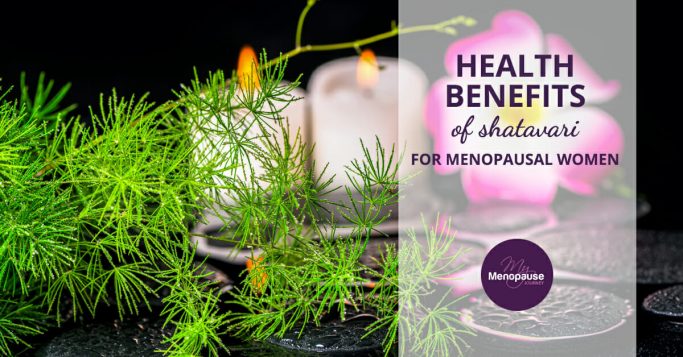Sarsaparilla gained its peak of fame due to a popular soft drink in Western culture that contains its active ingredient. The drink had a similar taste to root beer. It came to the West during the 19th century but didn’t have sarsaparilla roots but a flavoring mixture of birch oil and sassafras.
Sarsaparilla drink during that age became a root of mockery within manly cowboys when ordered at a saloon, as they classified it as a “sissy drink”. Sarsaparilla drink was a well-known beverage in the old West ordered by cowboys before visiting brothels as it was said could help avoid infections like syphilis and gonorrhea.
Today, loads of studies prove the medicinal benefits of the sarsaparilla plant to several diseases. Most researches indicate its effect as a libido booster and could also aid in menopausal symptoms.
What is Sarsaparilla?
Sarsaparilla is a long perennial vine with prickly stems and long, creeping roots. It is native in Mexico, Central America and the Caribbean. Its scientific name is Smilax ornate and is also known as Honduran sarsaparilla, Jamaican sarsaparilla and “Khao yen” in ancient China.
Its name came from the Spanish word zarzaparrilla, which means zarza as “bramble” and parrilla, meaning “little grapevine”. Roots of Sarsaparilla are used in the treatment of diseases.
How Sarsaparilla Works?
Sarsaparilla contains different active ingredients. One active ingredient is the saponins, specifically sarsapogenin saponins. This compound alters steroids in the lab and is not produced by the human body. Saponins bind to endotoxin (a compound that could kill harmful bacteria) in the digestive tract. This is a good treatment for some ailments in the joints, liver and reproductive system. In fact, from 1820 to 1910, sarsaparilla was registered in the U.S. Pharmacopoeia as a treatment for syphilis.
Aside from saponins, sarsaparilla is rich in phytoestrogens. These are plant-based estrogens that can copy your endogenous estrogens and function the way they do. Experts say phytoestrogens are safe to use for the body because they are less potent and they do not alter the functions of your naturally-produced estrogens. In addition, phytoestrogens are easy to flush out in your body.
Sarsaparilla also balances glandular function by producing and stabilizing the hormone production of testosterone and progesterone, that leads to increase in sexual drive.
Sarsaparilla in Menopause
Aside from helping boost libido, this plant also has anti-inflammatory properties that could help menopausal women ease joint problems, bloating, urinary problems, skin problems and fatigue.
Other Uses of Sarsaparilla
Sarsaparilla, as mentioned, has antibacterial properties that could also cure psoriasis, eczema, acne and syphilis. In Chinese medicine and South American culture, the anti-inflammatory property of the plant is used to treat leprosy. While cultures in Jamaica believed that sarsaparilla could help in arthritis, rheumatism and gout.
The herb also has antioxidant properties and could cleanse the blood and organs by flushing out toxins through perspiration and urination. It also nourishes the organs like the liver and colon and is believed that could enhance vision.
Side Effects of Sarsaparilla
Some people might encounter allergic reactions with sarsaparilla that could result in skin rash or hives. Inhalation of its roots may also trigger asthma attacks. So if you experience shortness of breath, chest pain or inflammation of the tongue, consult professional help immediately.
Saponins found in this plant could also irritate the gastrointestinal lining, which could result in stomach upsets. However, this effect may result after consuming large amounts of sarsaparilla.
The herb also has diosgenin that produces similar effects with estrogen, people taking birth control pills or hormone replacement therapies, as well as pregnant women, should not use sarsaparilla-containing products.
Taking of the herb and its supplement is also not advised for people with kidney problems as it has diuretic effects that irritate the kidney.
Buying Sarsaparilla
Sarsaparilla products are available in health stores as capsule, root, tincture or supplements. Some natural hormone balancing products and skincare products also contain sarsaparilla. However, take extra care when buying sarsaparilla. Make sure the labels indicate potency, strength, instructions, validity date, warnings and precaution. It should have the name of a reliable manufacturer.
Want to get more good information to you inbox?
Sign up for our newsletter below.
👉 What to Do Next
Don’t go just yet — especially if you’ve been feeling off and no one’s given you real answers.
Go to the START HERE page.
It’s where things begin to feel clearer. No more second-guessing, no more sorting through conflicting advice. Just calm, honest support for where you are right now.
And if you haven’t yet, download the FREE GUIDE.
It’s quick, clear, and made to help you feel better — without having to turn your whole life upside down.


Gita is the founder of My Menopause Journey. Since 2014, she has been supporting midlife women by sharing hard-earned learnings from her own experience. To advance her knowledge, Gita puts a lot of her time and effort into understanding the broad spectrum of women’s health. She immerses in extensive research about the physical, mental and emotional aspects of menopause. Gita believes in the life-changing power of healthy, holistic living — this is where she anchors her message to all women. Learn more about her marvelous mission in About us - My Menopause Journey.





Gita, of course I’m not asking for medical advice. In fact, I’m going to be seeing my doctor about this issue. I’ve been post menopausal for over three years. I started taking large doses of both sarsaparilla and cat’s claw about two months ago to control my high blood pressure. Recently I’ve had some spotting and some feelings like cramping and little sharp pains in my lower abdomen that feel like light menstrual cramps. Is it possible that sarsparilla and cat’s claw are stirring up the hormones to cause false menstruation?
Hi Melissa!
We have never heard or read anything about this before, but I am glad that you are taking the right step by seeing your doctor!
Many supplements have a strong effect. So, high doses or supplements taken together should always be done with precaution — preferably under a professional´s supervision!
All the best!
Gita
Is Sarsaparrilla considered a plant based estrogen? I’m 53 yrs. old and I just found out from taking a DNA blood test that my blood is prone to clotting. For prevention my Dr. advised me to stay away from estrogen products including plant based estrogen products. Sarsaparrilla is one of the ingredients in a product I’m presently taking.
Hi Jackie,
Sarsaparilla is a plant-based estrogen. Please consult with your doctor before you continue the product you’re using.
Thanks for stopping by!
Take Care,
Gita
I thought root beer was flavored with the bark from the sassafras tree.
I think the sassafras tree and the sarsaparilla plant are being confused.
Can somebody clear this up. I’m getting conflicting information. Thanks
Hi Becca,
Thanks for asking!
Sassafras and sarsaparilla are both used to flavor root beer along with others like licorice, nutmeg, mint, cinnamon and more.
Come back anytime. Have a great day!
Regards,
Gita